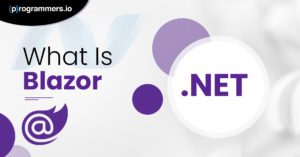Software testing (or QA testing) plays an important role in the overall software lifecycle. Testing is an important part of the process, as it determines the success of products, and what is required from them. Software testing can help meet the technical and business requirements of the organization to not only anticipate software issues and errors but to fix them in time.
The software testing lifecycle or STLC is similar to the software development life cycle, only that it is heavily focused on software testing and design. The STLC is based on a sequence of design activities conducted to ensure that all software-related goals and objectives are met by stakeholders in the organization. STLC involves stakeholders from across the board and verifies their activities.
Contrary to what most people think of it, software testing isn’t just a single step. Rather, software testing is made out of different steps and actions joined together. Software testing consists of multiple technologies combined together to achieve a single objective.
All of these stages come with a definite criterion for entry and exit. In this article, we will take a look at the entry and exit criteria for software testing at an organizational level. We plan to help companies avoid confusion with their considerations and get the best outcomes possible.
Determinants of Entry and Exit Criteria in Software Testing
Business associates determine software testing protocols at an entry or project level. The project goes through multiple stages and processes of the organization. Organizations must run a detailed testing program at the entry and exit points of each testing sphere. This process ensures the identification of anomalies and efficient software troubleshooting, resulting in optimal solution quality.
The test strategy or plan usually determines the software testing criteria at entry and exit points. The software testing methodology determines the testing approach. Some of the considerations for the testing methodology are mentioned below:
- Characteristics of the system being developed.
- The testing plan is in place, along with the length and breadth of the project.
- Project budget and timelines.
Generally speaking, the entry and exit software testing criteria are determined across four levels of the testing process:
- Integration Testing
- System Testing
- Unit Testing
- Acceptance Testing
Each type of testing requires different criteria for entry and exit points. The criteria ensure that the objectives aligned with the product are scheduled and met.
Entry Criteria for Software Testing
The entry criteria for software testing can be defined as all the specific conditions and concurrent activities that should be present at all times for a testing process to begin. The software testing life cycle or STLC can specify the entry criteria required during each phase of the testing process and can work out the best policy.
The entry criteria for QA testing in software development are finalized and decided upon after a thorough testing process is completed and a comprehensive understanding of business and software requirements is handled. An entry criterion includes the testing of software before it enters a new phase; neglecting it can stop its quality.
Some of the common requirements here include:
- All requirements are to be approved and defined.
- The partial or complete testable code should be available.
- Test cases are readily available.
- Data for testing is sufficient in nature and available.
- The testing environment is set up and the tools are available to all.
The entry testing criteria are broken down into different steps according to the testing lifecycle:
Unit Testing
- The entry test should be completed before the unit test starts.
- The business and functional requirements are approved and defined.
- The system, technical, and other designs are analyzed and reviewed.
- The testable codes are available.
- The testing environment is available.
Integration Testing
Integration testing immediately follows unit testing and comes with the following requirements:
- The unit testing phase should be completed.
- The integration plan and the testing environment should be ready to work on.
- Each module should go through a separate unit test.
- All priority bugs found in unit testing are cleared.
System Testing
- The integration test should be finalized.
- Test cases should be available.
- Priority bugs from integration tests should be removed.
Acceptance Testing
- Should follow the completion of system testing.
- Test cases should be available.
- Acceptance and availability of testing environment.
What are the Exit Criteria for Software Testing?
The exit criteria for software testing are a document prepared by the software development team in your organization to ensure all requirements and deadlines are met. This document contains all requirements that should be addressed before the testing phase can move on to the next stage.
The exit strategy depends on the test plan, strategy, logs, and cases among other factors to move toward another step. Software quality analysts review these documents to ensure that quality standards are maintained and defects are resolved completely.
The common exit criteria that should be met as part of the process include:
- Ensure the deadlines are met by the team and the amount of budget depleted as part of the process.
- Execution of all the different test cases under one roof.
- Identifying and closing defects across all areas of the coverage.
- Covering all requirements and functionalities through proper testing.
- No high-priority bug should be left out.
The exit criteria are also broken down into different testing phases. The plan can only move towards the next phase after the phases in the previous test have passed. The plan can only move towards integration testing from unit testing once it has cleared the former.
Software testing is done based on a software testing life cycle. The life cycle determines different phases, and software developers are required to step into different phases only after they have met the exit requirements of the previous one and the entry requirements of the next phase.




